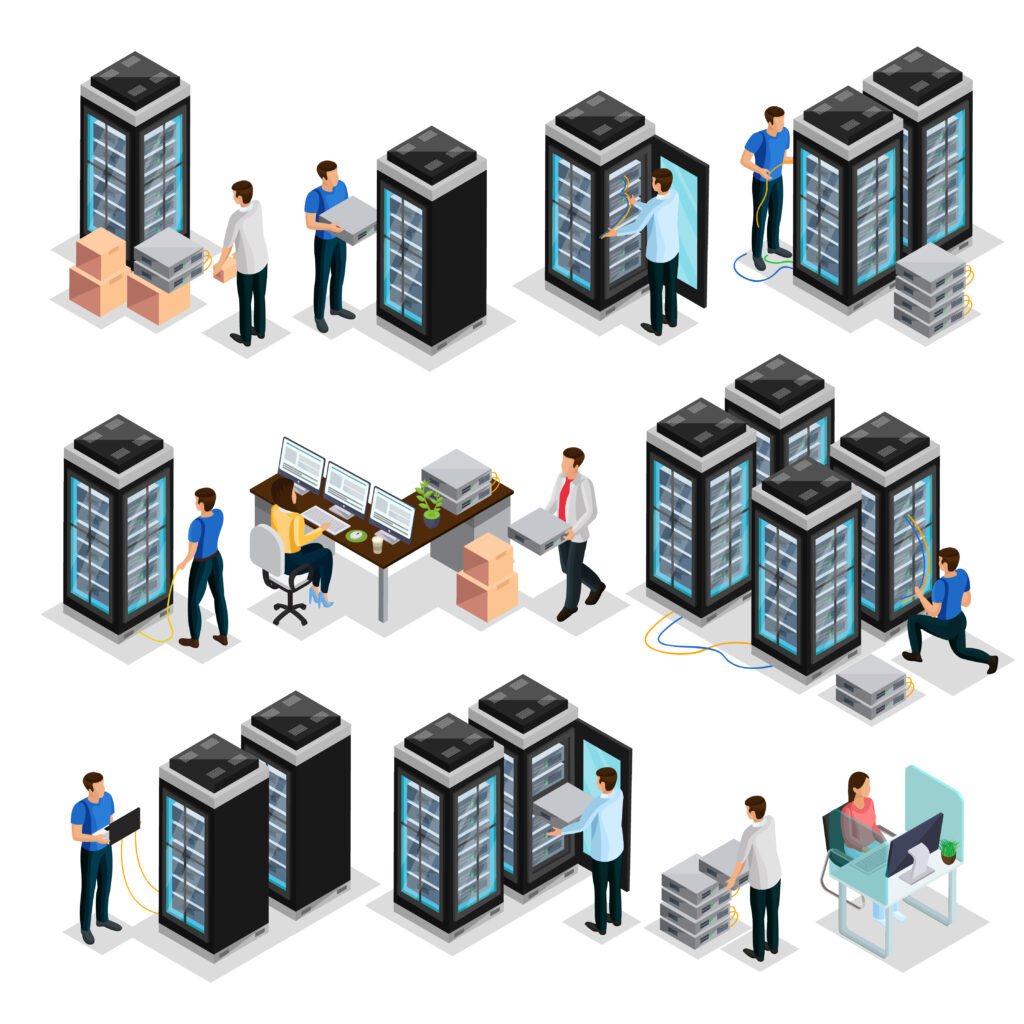
Apr 07 2024
/
How to setup a server rack
Whether you’re an IT professional, network installer, or a small business owner diving into IT infrastructure, setting up a server rack is crucial. The design of your rack affects network efficiency, equipment accessibility, and your team’s effectiveness. It’s a key part of any IT system often rushed in the hurry to get systems operational.
In this guide, we’ll show you the essential steps and considerations for setting up a server rack, ensuring you build an infrastructure that’s organized, secure, scalable, and future-proof.
Understanding Your Server Rack Needs
To start, it’s crucial to know your specific needs. Each server rack setup is unique, and a solution that suits one situation might not fit another. Consider your requirements, taking into account:
- Current Equipment: List your IT hardware, noting size, cooling, power needs, and access.
- Growth Projections: Estimate future space and power needs for new hardware.
- Environmental Considerations: Prepare for dust, moisture, or temperature issues if applicable.
- Accessibility: Choose a rack location that’s accessible for maintenance but secure.
Choosing the Right Server Rack
There are several types of server racks available, each with its strengths and intended uses:
- Enclosed or Open: Enclosed racks enhance security and protect from environmental damage, while open racks allow better cooling and easier equipment access.
- Standard or Custom: Standard racks suit most needs, but custom racks, while more expensive, provide tailored solutions for unique spaces or equipment.
- Mounted or Freestanding: Mounted racks save space by attaching to walls, whereas freestanding racks offer flexibility, mobility, and expansion options.
Consider also factors such as material quality, weight capacity, and cable management features.
Preparing Your Server Room
Before the physical setup of your server rack, ensure the server room is optimized for hosting the equipment:
- Power Needs: Check your equipment’s total power needs. Make sure your outlets and power units can handle the load and allow for growth.
- Cooling Systems: Good airflow is key to keep equipment cool and running optimally. Position cooling systems to enhance rack airflow.
- Network Connectivity: Set up all cabling and network infrastructure, including Ethernet and fiber optics, before installing the server rack.
- Security Measures: Plan your layout for controlled access. Use biometric locks, surveillance cameras, and necessary security measures.
Setting Up the Server Rack
Now that you’ve chosen your rack and prepared the environment, it’s time to set it up:
- Positioning: Place the rack where it’s most useful, considering airflow, cabling, and expansion potential.
- Leveling and Stabilization: Ensure the rack is level and stable. If necessary, secure it to the floor or wall, particularly in earthquake zones.
- Assembly: Follow the manufacturer’s instructions for assembly, making sure all parts are secure and shelves are properly positioned for your equipment.
- Grounding: Connect the rack to the building’s grounding system to safeguard against electrical shocks and ensure surge protectors work correctly.
Racking and Stacking Your Equipment
With the rack set up, you’re ready to start placing your equipment:
- Rack Units: Server gear is measured in rack units (U). Make sure you have enough depth and units for all your servers, switches, and storage.
- Weight Distribution: Evenly distribute equipment weight across the rack to prevent tilting or falling.
- Heat Considerations: Place servers for optimal airflow, with units needing more cooling at the bottom and back of the rack.
- Cable Management: Organize cables with management tools. Bundle, label, and color-code to ease troubleshooting later.
Powering Up and Testing
The physical setup is complete, but your new rack will need to be powered up and tested:
- Power Distribution: Connect all gear to power units, leaving room for growth and redundancy for crucial systems.
- First Boot Check: Turn on devices individually to spot issues before network integration.
- Testing: Conduct tests to confirm connectivity, operational equipment, and system performance.
- Documentation: Thoroughly document the setup for future reference, including layout, connections, and unique configurations.
Maintaining and Optimizing Your Server Rack
Your server rack setup is a living system that will require maintenance and occasional reconfiguration:
- Regular Inspection: Regularly check for cable wear, dust, and equipment issues.
- Scalability: Prepare for growth, ensuring extra space, power, and cooling for new equipment.
- Upgrades and Changes: Update documentation and manage cables well when changing equipment.
- Training: Train your team on the server rack setup for effective operation and maintenance.
Setting up a server rack is crucial for your IT infrastructure development. It’s complex, needing careful planning, attention to detail, and future foresight. By following the steps in this guide, you’ll create a robust, organized server rack, ready to meet your network’s demands. The quality of your setup today significantly affects your IT operations’ efficiency and reliability tomorrow.
Frequently Asked Questions
How often should I check my server rack?
Inspect your server rack every 3 to 6 months, adjusting for environment and usage. Dusty or busy areas might need more frequent checks.
Can I add aftermarket cooling to my server rack?
Yes, you can add aftermarket cooling for better thermal management. Just make sure it’s compatible and doesn’t stress your power supply.
How should I document my server rack setup?
Use clear, detailed diagrams for your layout and connections, and keep them updated with any changes. Keeping a digital copy is useful for easy sharing and updating.
How can I make my server rack scalable?
Allocate extra space for new equipment and ensure your power and cooling can support growth. Plan flexibly for future tech advancements.
What if I have issues after installation?
Check your documentation first for troubleshooting. If problems continue, contact the manufacturer or IT service. Keep your team trained and updated to solve issues efficiently.
Remember, maintaining, documenting, and planning for future growth ensures your server rack meets your IT needs effectively.
